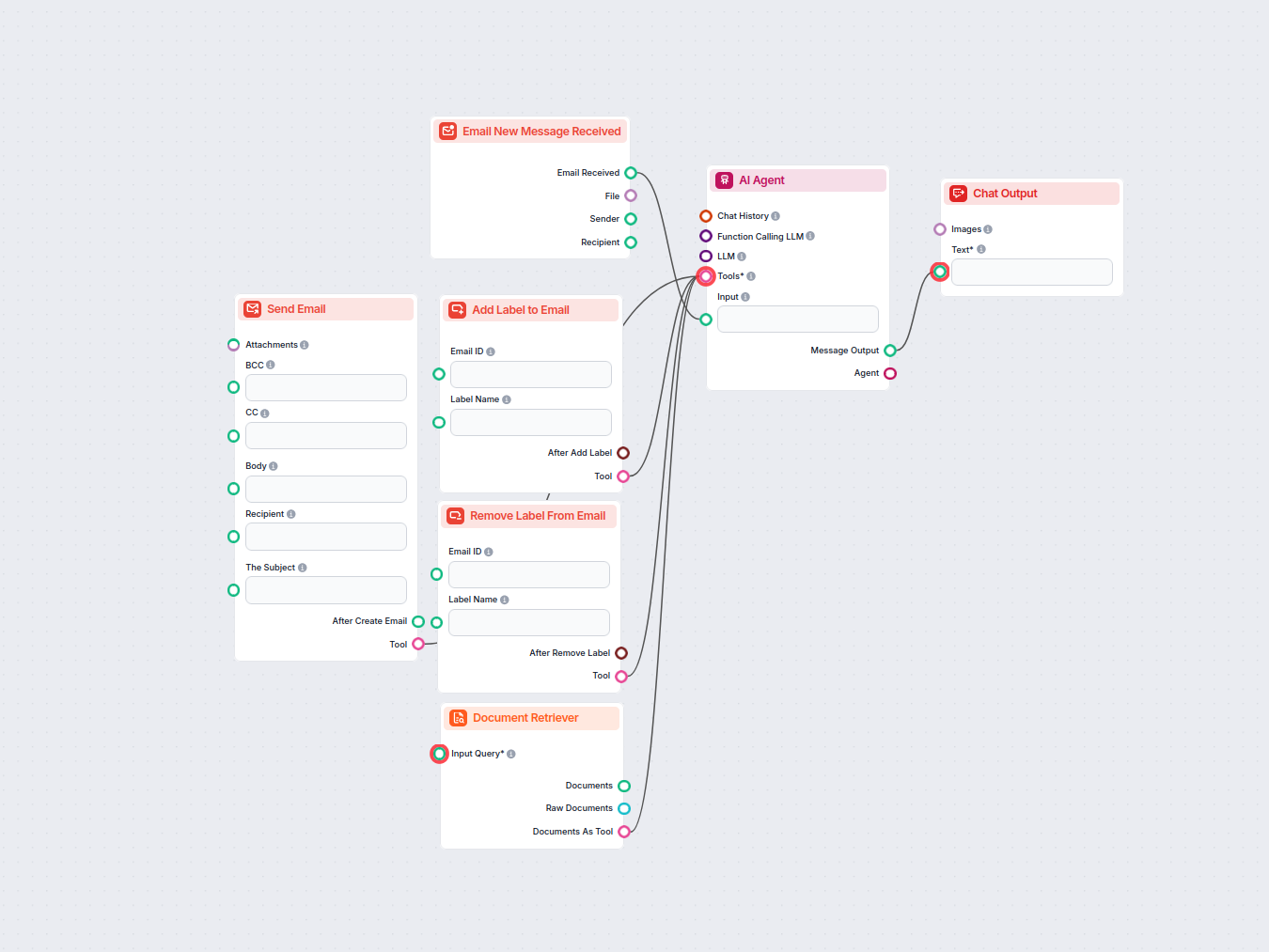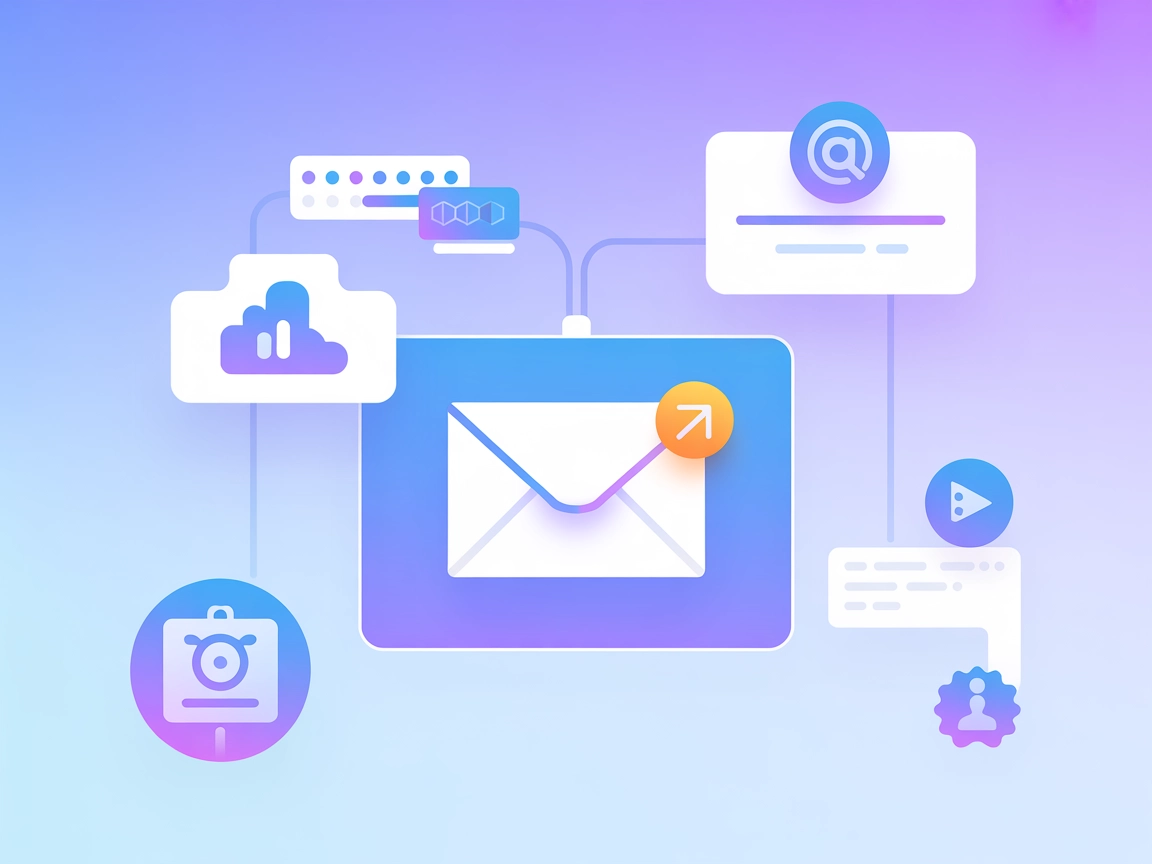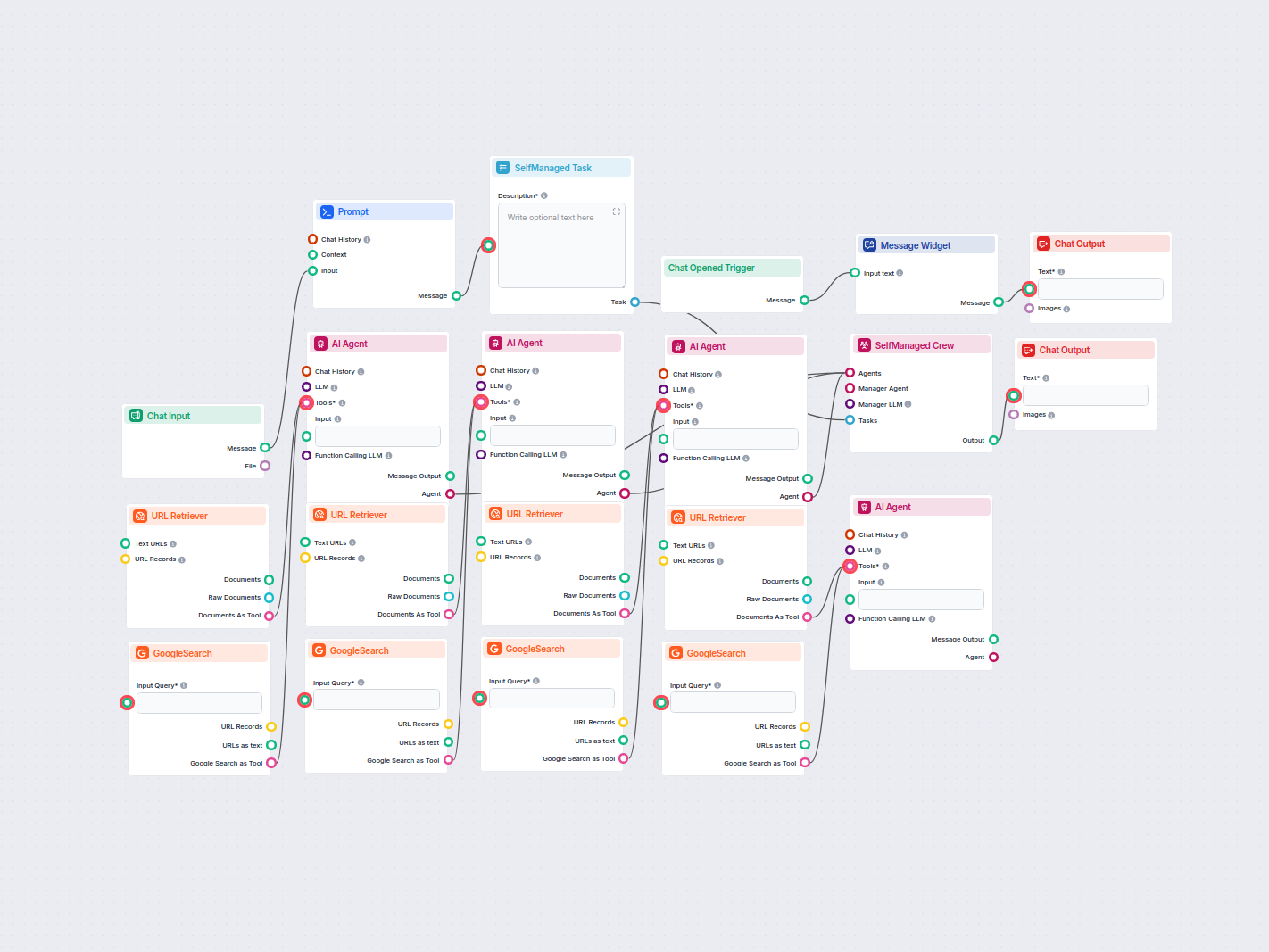Prompt
Create a prompt template with dynamic variables ({input}, {human_input}, {context}, {chat_history}, {system_message}).
This workflow determines if an email address is from a generic free email provider or from a custom business domain. It’s useful for lead qualification and identifying business-related contacts for sales and marketing teams.

Flows
Create a prompt template with dynamic variables ({input}, {human_input}, {context}, {chat_history}, {system_message}).
Below is a complete list of all components used in this flow to achieve its functionality. Components are the building blocks of every AI Flow. They allow you to create complex interactions and automate tasks by connecting various functionalities. Each component serves a specific purpose, such as handling user input, processing data, or integrating with external services.
The Chat Opened Trigger component detects when a chat session starts, enabling workflows to respond instantly as soon as a user opens the chat. It initiates flows with the initial chat message, making it essential for building responsive, interactive chatbots.
The Message Widget component displays custom messages within your workflow. Ideal for welcoming users, providing instructions, or showing any important information, it supports Markdown formatting and can be set to appear only once per session.
The Chat Input component in FlowHunt initiates user interactions by capturing messages from the Playground. It serves as the starting point for flows, enabling the workflow to process both text and file-based inputs.
Learn how FlowHunt's Prompt component lets you define your AI bot’s role and behavior, ensuring relevant, personalized responses. Customize prompts and templates for effective, context-aware chatbot flows.
Explore the Generator component in FlowHunt—powerful AI-driven text generation using your chosen LLM model. Effortlessly create dynamic chatbot responses by combining prompts, optional system instructions, and even images as input, making it a core tool for building intelligent, conversational workflows.
Discover the Chat Output component in FlowHunt—finalize chatbot responses with flexible, multi-part outputs. Essential for seamless flow completion and creating advanced, interactive AI chatbots.
Flow description
The “Recognize a Company Address” workflow is designed to evaluate email addresses and determine whether they belong to generic/free email providers (such as Gmail, Yahoo, Outlook, etc.) or to a custom (usually business or organizational) domain. This is an important task for lead qualification, business targeting, and filtering potential customers or contacts based on their email type.
Welcome and User Guidance:
When the user opens the chat, the workflow automatically triggers a welcome message. This message introduces the tool and explains its function: distinguishing between generic email providers and custom company domains.
The user is prompted to input an email address for analysis.
User Input:
The user enters an email address into the chat interface.
Prompt Preparation:
The workflow takes the user’s input and inserts it into a dynamic prompt template. This template instructs the underlying AI model to analyze the provided email address and respond with:
TRUE if the email uses a custom/company domain (e.g., @company.com)FALSE if the email uses a generic/free provider (e.g., @gmail.com, @yahoo.com)The prompt is very specific, ensuring the AI returns only one of the two possible outputs.
AI-Powered Evaluation:
The composed prompt with the user’s email is sent to a Large Language Model (LLM) generator. The LLM processes the request based on the prompt’s instructions.
Result Display:
The AI’s output (TRUE or FALSE) is displayed in the chat, providing immediate feedback to the user regarding the type of email address provided.
| Step | Component | Function |
|---|---|---|
| 1 | ChatOpenedTrigger | Detects when a user opens the chat and initiates the workflow. |
| 2 | MessageWidget | Displays a welcome/instructional message to the user. |
| 3 | ChatInput | Receives the email address input from the user. |
| 4 | PromptTemplate | Constructs a clear and concise prompt for the AI, embedding the user’s email address. |
| 5 | Generator (LLM) | Processes the prompt and determines if the email is generic or a custom domain. |
| 6 | ChatOutput | Shows the LLM’s response (TRUE/FALSE) directly in the chat interface for the user. |
Lead Qualification at Scale:
Quickly distinguish between personal and business/professional emails for sales, marketing, or customer onboarding, enabling automated lead scoring and filtering.
Targeted Outreach and Segmentation:
Helps segment users or leads based on whether their email is associated with a company, which is useful for B2B campaigns or access controls.
Automation & Consistency:
Eliminates manual checking, reducing human error and saving time, especially when processing large lists of email addresses.
Immediate Feedback:
Provides users or team members with instant results, making it suitable for interactive workflows or self-service tools.
This workflow combines user interaction, prompt engineering, and AI-powered evaluation to efficiently and reliably determine the nature of an email address. It is especially valuable for organizations seeking to automate and scale their lead qualification and user segmentation processes.
We help companies like yours to develop smart chatbots, MCP Servers, AI tools or other types of AI automation to replace human in repetitive tasks in your organization.
Automate Gmail inbox management with an AI agent that reads incoming emails, leverages your knowledge base to craft professional replies, and can send, label, o...
Discover the Email Type Analyzer by FlowHunt—a tool designed to categorize email addresses by domain type, aiding lead qualification and targeted outreach. Inst...
This AI-powered workflow helps sales professionals prepare for meetings by generating a comprehensive prep sheet. By providing a company name, the flow research...



